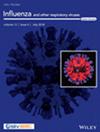Phylogenetic Study of Local Patterns Influenza A(H3N2) Virus Transmission in a Semi-Isolated Population in a Remote Island in Japan Between 2011 and 2013
Abstract
Background
Influenza A outbreak risk is impacted by the potential for importation and local transmission. Reconstructing transmission history with phylogenetic analysis of genetic sequences can help assess outbreak risk but relies on regular collection of genetic sequences. Few influenza genetic sequences are collected in Japan, which makes phylogenetic analysis challenging, especially in rural, remote settings. We generated influenza A genetic sequences from nasopharyngeal swabs (NPS) samples collected using rapid influenza diagnostic tests and used them to analyze the transmission dynamics of influenza in a remote island in Japan.
Methods
We generated 229 whole genome sequences of influenza A/H3N2 collected during 2011/12 and 2012/13 influenza seasons in Kamigoto Island, Japan, of which 178 sequences passed the quality check. We built time-resolved phylogenetic trees from hemagglutinin sequences to classify the circulating clades by comparing the Kamigoto sequences to global sequences. Spatiotemporal transmission patterns were then analyzed for the largest local clusters.
Results
Using a time-resolved phylogenetic tree, we showed that the sequences clustered in six independent transmission groups (1 in 2011/12, 5 in 2012/13). Sequences were closely related to strains from mainland Japan. All 2011/12 strains were identified as clade 3C.2 (n = 29), while 2012/13 strains fell into two clades: clade 3C.2 (n = 129) and 3C.3a (n = 20). Clusters reported in 2012/13 circulated simultaneously in the same regions. The spatiotemporal analysis of the largest cluster revealed that while the first sequences were reported in the busiest district of Kamigoto, the later sequences were scattered across the island.
Conclusion
Kamigoto Island was exposed to repeated importations of Influenza A(H3N2), mostly from mainland Japan, sometimes leading to local transmission and ultimately outbreaks. As independent groups of sequences overlapped in time and space, cases may be wrongly allocated to the same transmission group in the absence of genomic surveillance, thereby underestimating the risk of importations. Our analysis highlights how NPS could be used to better understand influenza transmission patterns in little-studied settings and improve influenza surveillance in Japan.


 求助内容:
求助内容: 应助结果提醒方式:
应助结果提醒方式:


